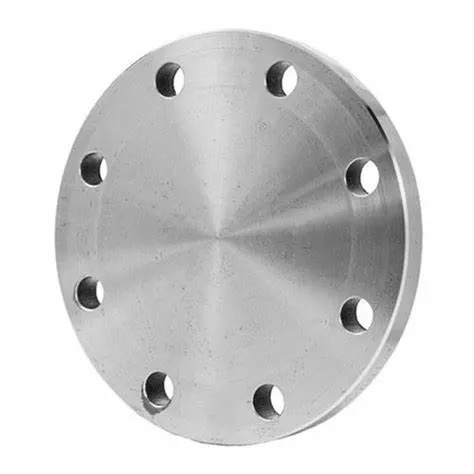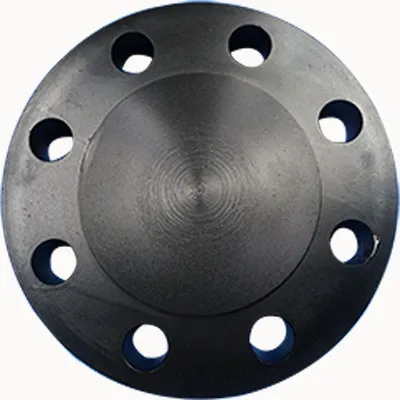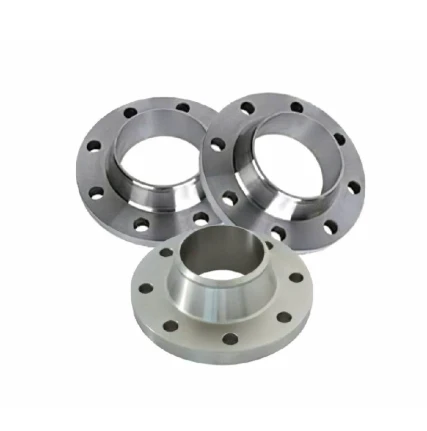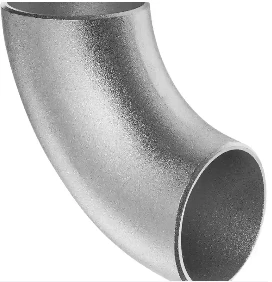ANSI B16.5 Carbon Steel BL Flange refers to the carbon steel blind flange that complies with the ANSI B16.5 standard. The following is a detailed introduction:
Carbon steel material characteristics
Composition: Mainly composed of iron and carbon, with the carbon content generally between 0.05% and 2.11%. It also contains small amounts of manganese, silicon, sulfur, phosphorus and other elements. Manganese enhances strength and hardness; silicon improves strength and oxidation resistance; sulfur and phosphorus are usually harmful impurities, sulfur causes hot brittleness, and phosphorus causes cold brittleness.
performance
Strength and toughness: It has good strength and can withstand certain pressure and stress. Different strength levels can be achieved by adjusting the carbon content and heat treatment process. At the same time, it has a certain toughness and will not break easily when subjected to impact and deformation, thus ensuring safety under complex working conditions.
Welding performance: The overall welding performance is good, but as the carbon content increases, the welding performance will decrease. More sophisticated welding process control is required, such as selecting suitable welding materials, controlling welding current and speed, etc., to ensure the quality of the welded joint.
Structural features
No center through hole: Compared with other types of flanges, the most notable feature of the blind flange is that it has no center through hole. It is a solid disc used to close the end of the pipe and prevent the flow of the medium in the pipe.
Flange sealing surface form
Raised Face (RF): The flange surface has a raised annular area, which can effectively improve the sealing performance when used with a gasket and is suitable for most medium and low pressure conditions.
Flat surface (FF): The structure is relatively simple and suitable for occasions where sealing requirements are not high.
Ring joint (RJ): used in harsh working conditions such as high temperature and high pressure, and requires special ring gaskets to achieve sealing.
Bolt holes: Evenly distributed along the circumference, connected to another flange or equipment by bolts and nuts to form a tight connection. The number and diameter of bolt holes are determined by flange size and pressure rating.
Size and pressure rating
Size specifications: Nominal pipe diameters range from 1/2" (DN15) to 24" (DN600) and even larger. Specific dimensions include outer diameter, bolt circle diameter, raised face diameter, flange thickness, etc. Strict dimensional standards ensure correct installation and connection with pipes and other components.
Pressure class: Common pressure classes are Class 150, Class 300, Class 600, Class 900, Class 1500 and Class 2500. The higher the pressure rating, the greater the pressure the flange can withstand. For example, Class 150 flanges are suitable for low-pressure applications, while Class 2500 flanges are designed for high-pressure systems.
Advantages
Good sealing performance: As a blind flange, its main function is to seal the pipeline, which can effectively prevent medium leakage and ensure the sealing of the pipeline system.
High strength and reliability: Carbon steel material gives the blind flange high strength and reliability, enabling it to withstand the pressure inside the pipeline and external mechanical stress.
Strong versatility: It complies with ANSI B16.5 standard, has good versatility and interchangeability, and can be used with other flanges and pipe components that comply with this standard.
Application Areas
Oil and gas industry: used for inspection, maintenance or isolation of pipeline systems at the end of oil and gas pipelines, at the inlet and outlet of equipment, etc.
Chemical industry: used for pipe ends that do not require medium circulation in chemical production, such as spare interfaces of reactors, dead ends of pipes, etc., to ensure the safety and stability of the production process.
Power industry: used to isolate pipes or equipment in steam pipes, water supply and drainage systems, etc. in power plants to facilitate equipment inspection and maintenance.
Water treatment industry: In water treatment systems, it is used for segmented isolation of pipelines, plugging of equipment inlets and outlets, etc., to facilitate system commissioning, maintenance, and repair.
ANSI B16.5 vs. ASME B16.5
When selecting industrial flanges, many buyers come across the terms ANSI B16.5 Flange and ASME B16.5 Flange. But are they different? The short answer: No. ANSI B16.5 was the original designation, but it has since been replaced by ASME B16.5, which is now the official standard for pipe flanges and flanged fittings covering sizes from ½ inch to 24 inches.
What Is ANSI B16.5 Flange?
The term ANSI B16.5 Flange is still commonly used in industries like oil & gas, petrochemicals, power plants, and waterworks. It refers to a standard that specifies flange dimensions, pressure ratings (Class 150 to Class 2500), materials, and testing requirements. However, in modern applications, ASME (American Society of Mechanical Engineers) has taken over the responsibility of maintaining this standard, officially renaming it ASME B16.5.
Why Choose ASME B16.5 Flange for Your Project?
Strict Quality Assurance: ASME B16.5 ensures high precision, leak-proof connections, and safety compliance.
Global Acceptance: Most industries now require ASME-compliant flanges to meet international engineering codes.
Diverse Material Options: Available in carbon steel, stainless steel, and alloy steel, ensuring durability in harsh environments.
Find High-Quality ANSI B16.5 Flanges at Yulong
At Yulong, we supply premium ANSI B16.5 Flanges that meet ASME B16.5 standards, ensuring superior performance and reliability. Whether you need weld neck, slip-on, or blind flanges, our products are manufactured with precision machining and rigorous testing.
📞 Contact Yulong today for ANSI B16 5 Flange PDF and fast delivery on all ASME B16.5 Flanges! 🚀
ANSI B16.5 Flange Materials: Stainless Steel vs Carbon Steel vs Alloy
When selecting an ANSI B16.5 Flange, the choice of material plays a critical role in performance, durability, and application suitability. The three most common materials—stainless steel, carbon steel, and alloy steel—each offer unique advantages. Understanding their differences helps ensure the right selection for your pipeline or industrial system.
Stainless Steel ANSI B16.5 Flange
Stainless steel flanges, such as SS 304, SS 316, and duplex grades, are highly resistant to corrosion, oxidation, and extreme temperatures. These flanges are ideal for industries like chemical processing, food and beverage, pharmaceuticals, and marine applications, where exposure to moisture and corrosive substances is frequent. Additionally, stainless steel ANSI B16.5 Flanges maintain structural integrity under harsh environments, making them a long-term, low-maintenance option.
Carbon Steel ANSI B16.5 Flange
Carbon steel flanges, such as ASTM A105 and A350 LF2, are known for their high strength, cost-effectiveness, and toughness. These flanges are widely used in oil & gas, power plants, and heavy-duty industrial pipelines due to their ability to withstand high pressure and temperature fluctuations. However, carbon steel is more susceptible to rust, requiring protective coatings or galvanization in corrosive environments.
Alloy Steel ANSI B16.5 Flange
Alloy steel flanges, like ASTM A182 F11 and F22, offer a balance between strength, heat resistance, and corrosion protection. These flanges are perfect for high-temperature and high-pressure applications, such as petrochemical plants and power generation facilities. The addition of elements like chromium and molybdenum enhances durability, ensuring superior performance in demanding conditions.
Choosing the right ANSI B16.5 Flange depends on the specific requirements of your project. Yulong provides premium-quality stainless steel, carbon steel, and alloy steel flanges, ensuring high precision, durability, and compliance with global standards. Contact us today for expert guidance and competitive pricing!
















